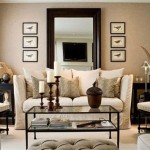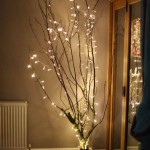What Is A Bohemian Room Decoration?
Bohemian room decoration, often shortened to "boho," is a distinctive interior design style characterized by its eclectic mix of colors, patterns, textures, and globally-inspired elements. It rejects rigid conformity and embraces a free-spirited, unconventional aesthetic. The term "bohemian" is derived from the French word for "gypsy," reflecting the nomadic and artistic lifestyle traditionally associated with travelers, writers, and artists. In interior design, bohemian style captures this ethos by prioritizing personal expression and comfort over strict adherence to trends or design rules.
At its core, bohemian decoration is about creating a space that feels authentic, personal, and lived-in. It's a style that encourages the mixing and matching of different eras, cultures, and design sensibilities. There is no single "right" way to decorate a bohemian room, as individuality and self-expression are paramount. This makes it a highly adaptable style, suitable for a wide range of spaces and personal preferences.
Unlike minimalist or modern designs that often prioritize clean lines and sparse décor, bohemian rooms thrive on abundance. This doesn't necessarily mean clutter, but rather a carefully curated collection of items that hold personal meaning and contribute to the room's overall ambiance. These items can include anything from vintage furniture and handcrafted textiles to globally sourced artifacts and natural elements like plants and crystals.
The Importance of Color and Pattern in Bohemian Design
Color plays a crucial role in establishing the bohemian atmosphere. While there are no strict rules regarding color palettes, certain hues are more commonly associated with the style. Warm and earthy tones, such as browns, oranges, reds, and yellows, are often used as a base, creating a sense of comfort and grounding. These can then be accented with vibrant jewel tones like emerald green, sapphire blue, amethyst purple, and ruby red, adding depth and visual interest.
However, bohemian design is not limited to just warm or jewel tones. Muted pastels and neutral shades can also be incorporated, especially when paired with rich textures and intricate patterns. A subtle color palette can create a more relaxed and sophisticated bohemian vibe, while still retaining the style's characteristic eclecticism. The key is to choose colors that resonate with the individual's personal taste and contribute to the desired mood of the room.
Patterns are equally important as colors in bohemian decoration. The style embraces a wide variety of patterns, often combining them seemingly haphazardly. Common patterns include tribal prints, geometric designs, floral motifs, and paisley patterns. These patterns can be incorporated through textiles such as rugs, curtains, cushions, and throws, as well as through wallpaper, artwork, and decorative accessories.
Mixing and matching different patterns is a hallmark of bohemian design. The key to successfully combining patterns is to vary their scale and type. For example, a large-scale floral wallpaper can be paired with smaller-scale geometric cushions and a tribal-print rug. The patterns should complement each other, not clash, creating a visually cohesive and interesting space. One effective technique is to use a common color thread to tie disparate patterns together.
Furthermore, texture plays a significant role in complementing color and pattern. Layering different textures, such as rough natural fibers, soft velvets, and smooth silks, adds depth and dimension to the room. This tactile element enhances the overall sensory experience and contributes to the bohemian room's cozy and inviting atmosphere.
Key Furniture and Decor Elements in Bohemian Rooms
Furniture in a bohemian room is often a mix of vintage, antique, and globally-inspired pieces. Secondhand finds are particularly valued, as they contribute to the style's sense of history and individuality. Comfortable seating is essential, with plush sofas, oversized floor cushions, and papasan chairs being popular choices. Low-lying furniture is also common, creating a relaxed and informal atmosphere.
Rattan and wicker furniture are frequently used in bohemian spaces, adding a natural and earthy touch. These materials can be incorporated through chairs, tables, headboards, and decorative baskets. Wood furniture with a distressed or weathered finish is also a good fit, enhancing the style's vintage appeal.
Rugs are a fundamental element of bohemian decoration. Layering multiple rugs of different sizes, patterns, and textures is a common technique. Persian rugs, kilim rugs, and Moroccan rugs are all popular choices, adding color, pattern, and warmth to the floor. Jute rugs and other natural fiber rugs can also be used as a base layer, providing a neutral backdrop for more colorful and patterned rugs.
Textiles are used extensively throughout bohemian rooms. Macrame wall hangings, woven tapestries, and embroidered pillows add texture and visual interest. Throws and blankets are draped over sofas and chairs, creating a cozy and inviting atmosphere. Curtains made from sheer or lightweight fabrics allow natural light to filter through, enhancing the room's airy and relaxed feel. The use of textiles is a significant contributor to the layered and eclectic aesthetic.
Plants are another essential element of bohemian design. Bringing nature indoors is a key aspect of the style, creating a sense of tranquility and connection to the natural world. A variety of plants can be used, from hanging plants and potted succulents to large leafy trees. Plants not only add visual appeal but also purify the air and create a more calming environment. Plant hangers made from macrame or rope are a popular way to display plants in a bohemian room.
Lighting is also crucial in shaping the atmosphere of a bohemian room. Soft, warm lighting is preferred, creating a cozy and inviting ambiance. String lights, fairy lights, and lanterns can be used to add a touch of whimsy and sparkle. Table lamps with interesting bases and lampshades can also be incorporated, providing both functional and decorative lighting. Candles and incense are often used to enhance the room's sensory experience, creating a relaxing and aromatic atmosphere.
Embracing Personal Expression and Uniqueness
At the heart of bohemian room decoration lies the principle of personal expression. This style is not about following strict rules or conforming to trends but rather about creating a space that reflects the individual's personality, interests, and experiences. This means that no two bohemian rooms will ever be exactly alike.
Incorporating personal collections and mementos is a key aspect of bohemian design. This can include anything from artwork and photographs to travel souvenirs and vintage finds. Displaying these items in a creative and meaningful way adds character and individuality to the room. Open shelving is often used to showcase collections, allowing them to become a focal point of the space.
Handmade and DIY items are also highly valued in bohemian decoration. This can include anything from painted furniture and hand-sewn cushions to macrame wall hangings and upcycled décor. Adding handmade elements to the room gives it a unique and personal touch, reflecting the individual's creativity and craftsmanship. DIY projects also offer a way to personalize and customize the space to fit specific needs and preferences.
The freedom to mix and match different styles and eras is another hallmark of bohemian design. This means that elements from different cultures, time periods, and design movements can be combined to create a unique and eclectic look. For example, a mid-century modern chair can be paired with a Moroccan rug and a vintage trunk, creating a visually interesting and unexpected combination. The key is to find a balance between different styles, ensuring that they complement each other and create a cohesive overall aesthetic.
Ultimately, creating a bohemian room is about embracing imperfection and celebrating individuality. It's about creating a space that feels authentic, comfortable, and inspiring. By incorporating a mix of colors, patterns, textures, and personal touches, anyone can create a bohemian room that reflects their unique personality and style.

17 Boho Decorating Ideas For Your Home Extra Space Storage

20 Boho Living Room Ideas For A More Relaxed Home

31 Bohemian Bedroom Decor Boho Room Ideas Modern Interior Design Home Décor Inspiration Decoholic

How To Nail The Bohemian Style In Your Home

Cozy Boho Bedroom Inspiration Small Space Decor Opps Fellas Creative And Wonderful

Trendy Bohemian Style Decor For Every Room Of Your Home Decorilla Interior Design

25 Boho Bedrooms To Inspire Your Dream Oasis

25 Cute Modern Boho Living Room Ideas Nikki S Plate

Boho Bedroom Decor The 11 Most Beautiful Ideas Ta Dubai

25 Boho Bedroom Ideas For A Free Spirited Sleeping Space
Related Posts







